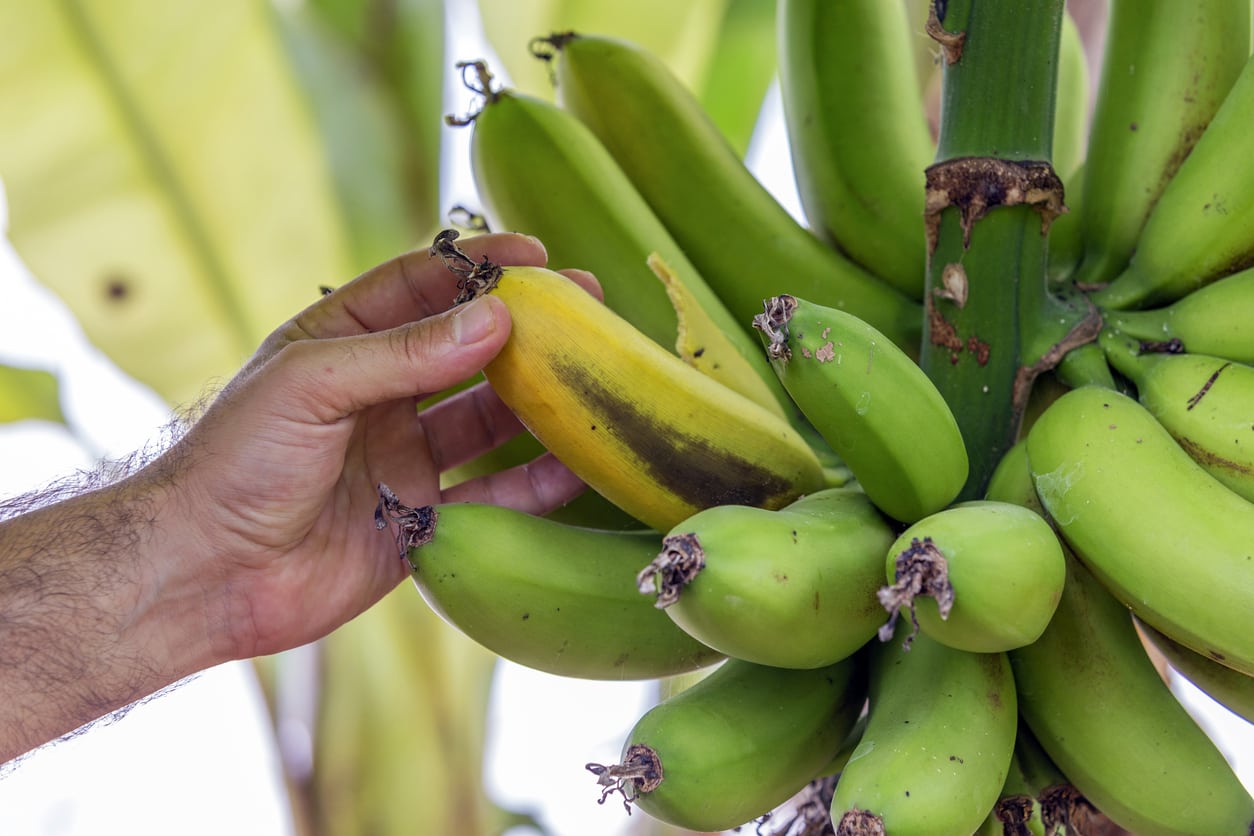Banana Tree Fruit Issues: Why Do Banana Trees Die After Fruiting

Banana trees are amazing plants to grow in the home landscape. Not only are they beautiful tropical specimens, but most of them bear edible banana tree fruit. If you have ever seen or grown banana plants, then you may have noticed banana trees dying after bearing fruit. Why do banana trees die after fruiting? Or do they really die after harvesting?
Do Banana Trees Die After Harvest?
The simple answer is yes. Banana trees do die after harvest. Banana plants take around nine months to grow up and produce banana tree fruit, and then once the bananas have been harvested, the plant dies. It sounds almost sad, but that isn’t the entire story.
Reasons for Banana Tree Dying After Bearing Fruit
Banana trees, actually perennial herbs, are comprised of a succulent, juicy “pseudostem” that is actually a cylinder of leaf sheaths which can grow up to 20-25 feet (6 to 7.5 m.) in height. They rise up from a rhizome or corm. Once the plant has fruited, it dies back. This is when suckers, or infant banana plants, begin to grow from around the base of the parent plant.
The aforementioned corm has growing points that turn into new suckers. These suckers (pups) can be removed and transplanted to grow new banana trees and one or two can be left to grow in place of the parent plant. So, you see, although the parent tree dies back, it is replaced by baby bananas almost immediately.
Because they are growing from the corm of the parent plant, they will be just like it in every respect. If your banana tree is dying after bearing fruit, don’t worry. In another nine months, the baby banana trees will be all grown up like the parent plant and ready to present you with another succulent bunch of bananas.
Sign up for the Gardening Know How newsletter today and receive a free copy of our e-book "How to Grow Delicious Tomatoes".

Amy Grant has been gardening for 30 years and writing for 15. A professional chef and caterer, Amy's area of expertise is culinary gardening.
